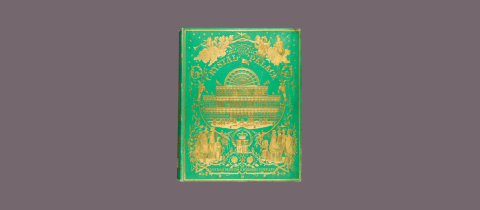Mary Poppins, starring Julie Andrews, was a big hit for Disney studios in 1964. The film was a musicalized version of the children’s books about a magical English nanny written between 1934 and 1988 by P.L. Travers. The movie featured a number of songs written by Robert and Richard Sherman including the catchy tune sung by Andrews with the line, “A spoonful of sugar helps the medicine go down.”
The idea for the lyrics came from a real life situation. Robert Sherman was working on ideas for a song but was drawing a blank until one day he came home and learned from his wife that his children had received a polio vaccine. Thinking that the vaccine had been a shot in the arm, he asked one of his children whether it had hurt. Not at all, the child replied. There had been no jab. A drop of liquid was placed on a sugar cube that had to be swallowed. At that moment the title for the song was born!
The oral vaccine that the Sherman children received had been developed by Albert Sabin and was introduced commercially in 1961. It used a weakened form of the polio virus that triggered the production of antibodies against the active virus. The oral version to a large extent replaced the original injectable vaccine introduced in 1955 by Jonas Salk based on an inactivated form of the virus. Thanks to these vaccines, polio has been largely eliminated from the world.
Of course, every sort of medical intervention is associated with some risk. In very rare cases, the vaccine can cause polio symptoms, but the benefits greatly outweigh any risk. Both vaccines are on the World Health Organization’s Model Lists of Essential Medicines, the most important medications needed in a basic health system. Had the vaccine been available earlier, U.S. president Franklin Roosevelt would not have contracted polio in 1921.
The spoonful of sugar in combination with a medicine may have an impact other than just pleasing our musical appetite. It seems that infants given a little bit of a sugar solution feel less pain during injections. British pediatrician Paul Heaton found that a few drops of sucrose solution put on their tongues before an injection was capable of blocking the pain felt in their arms or bottoms. He theorizes that: “The sweet taste works through nerve channels in the tongue that perceive sweetness in the brain.” The brain reacts by producing endorphins, the body’s natural pain relievers. Furthermore, in babies, sucking releases endocannabinoids that also alleviate pain. Heaton noted that once babies taste the solution, they cried less and recovered more quickly from the jab. He recommends giving babies just enough sugary solution to taste, but not enough to swallow before vaccination. Interestingly, the relationship between sweets and pain relief was first mentioned in historic Jewish texts that document baby boys being given honey before circumcision. What about adults? Well, chocolates, sweet pastries and soft drinks make for a less painful life for many people.
The Sherman brothers also composed the song that has been played more often in the world than any other. It’s a Small World After All is featured at all the Disney theme parks, an adaptation of an attraction introduced at the New York World’s Fair in 1964. The Sherman Brothers wrote the song in the wake of the 1962 Cuban Missile Crisis, which influenced the song’s message of peace and brotherhood. They also wrote a song for the Adventure Thru Inner Space attraction that was presented in Disneyland’s Tomorrowland from 1967 to 1985 designed to simulate humans shrinking to a size smaller than an atom. Visitors boarded Atommobiles and began a journey that passed through snowflakes into the inner space of molecules, then atoms. They got an idea of crystal structure, bonding between atoms and the composition of an atom. The journey was accompanied by the song Miracles from Molecules.
From the beginning until 1977, Adventure Thru Inner Space was sponsored by the Monsanto Company, which later transitioned from being a chemical manufacturer to a biotechnology firm. Founded in 1901 by John Francis Queeny and named after his wife’s family, Monsanto initially produced food additives like saccharin and vanillin before expanding into industrial chemicals such as sulphuric acid and PCBs in the 1920s. By the 1940s, it was a major producer of plastics, including polystyrene, as well as a variety of synthetic fibres. Monsanto scientists had a number of notable achievements, like the development of “catalytic asymmetric hydrogenation,” that made possible the production of L-Dopa, the major drug used in the treatment of Parkinson’s disease. They also laid the foundation for the mass production of the light emitting diodes (LEDs) that have revolutionized the lighting industry.
Monsanto has been criticized for once manufacturing such controversial products as the insecticide DDT, PCBs used as insulators in electronic equipment and the notorious Agent Orange that was widely deployed as a defoliant during the Vietnam War. At the time, DDT and PCBs solved immediate problems, with DDT saving millions of people from contracting malaria and PCBs in transformers making electricity widely available. The environmental issues that eventually emerged concerning these chemicals were not, and probably could not have been foreseen at the time.
Today, most people associate Monsanto with genetic modification and the company serves as a lightning rod for anti-GMO activists. Indeed Monsanto was among the first to genetically modify a plant cell and one of the first to conduct field trials of genetically modified crops and now markets canola, soy, corn and sugar beet seeds that yield plants capable of resisting herbicides and warding off insects.
Let me end with a stanza from the Sherman brothers’ song "Miracles from Molecules" that once captivated visitors to Disneyland and which I believe is still meaningful today:
Now Men with dreams are furthering,
What Nature first began,
Making modern miracles,
From molecules, for Man.
Want to comment on this article? Visit our FB Page!







